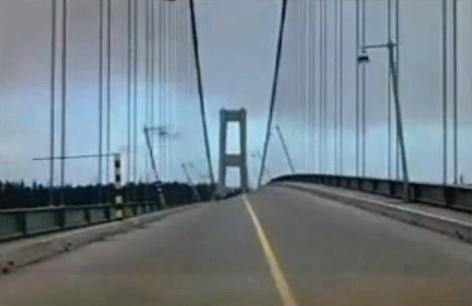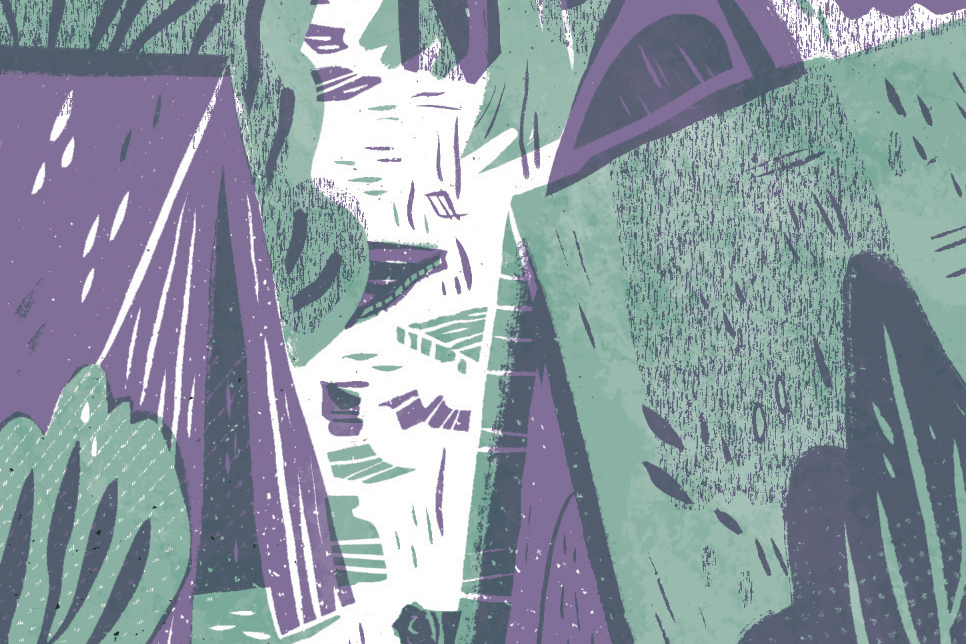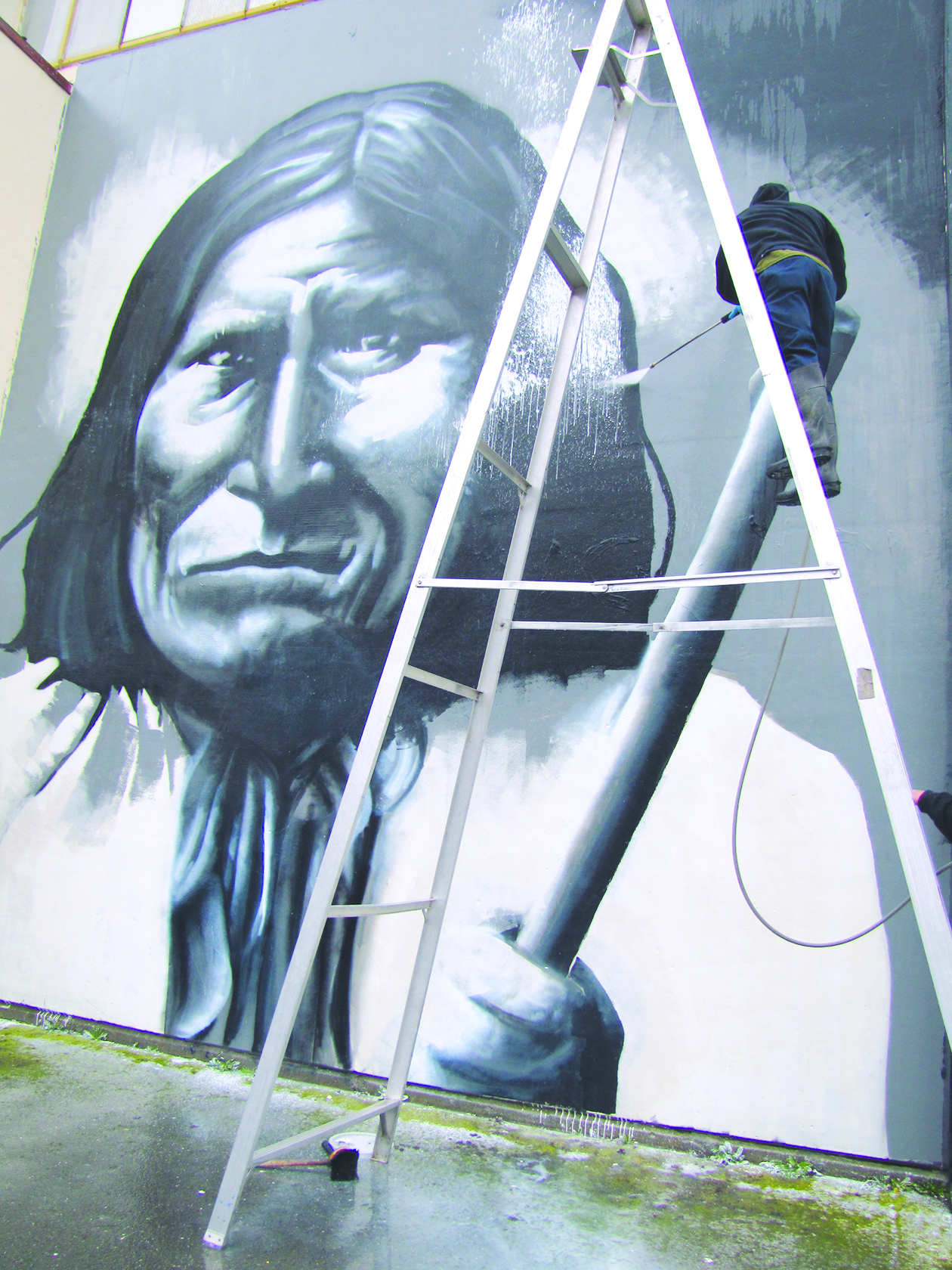While it’s fresh on everyone’s mind today – thanks to the unsettling pictures and media frenzy – last night’s collapse of the I-5 Skagit River Bridge is far from Washington’s first catastrophe of its kind. As Rob McNair-Huff, who co-authored the book
Washington Disasters: True Stories of Tragedy and Survival
along with his wife Natalie, says: “Our state has a real history of losing bridges.”
See Also:
Fox Anchor Declares ‘All Hands on Dick’ at Bridge Site
Washington Bridges Were Given a C- By Engineers on Tuesday
So how does last night’s bridge disaster stack up? It depends on what metric you use. Certainly, with no loss of life and only two vehicles with a total of three occupants sent into the water – resulting in only minor injuries – the Skagit River Bridge collapse pales in comparison to the Allen Street Bridge disaster of 1923, in which at least 35 people died – making it Washington’s deadliest bridge failure of all time.
But that’s not to say the Skagit River Bridge collapse won’t remain one of the state’s most iconic bridge failures. Here’s a quick look at some Washington’s most memorable:
The Allen Street Bridge Collapse of 1923
Built entirely of wood in 1906, the Allen Street Bridge in Kelso fell into the Cowlitz River on Jan. 3, 1923. Authorities believe it took the lives of at least 35 people. According to HistoryLink.org, “because of the large number of transients working in the area, an exact figure will never be known.” Witnesses reported there were between 100 and 150 people and as many as 20 vehicles crossing the bridge when a suspension cable snapped, quickly downing the supporting towers and sending the entire bridge into the Cowlitz. The Allen Street Bridge was said to have been weakened by overuse and recent flooding. According to HistoryLink.org, “Claims for death or injury resulting from the bridge collapse were filed against Cowlitz County and the City of Kelso, eventually totaling over $500,000.” While the exact numbers remain fuzzy, “It’s certainly the largest loss of life that I’m aware of as a bridge collapse,” says McNair-Huff.
The Hood Canal Bridge Sinks in 1979
On Feb. 13, 1979 wind gusts of up to 120 mph helped sink the Hood Canal Bridge, the one and one-fifth mile floating pontoon bridge that connects the Kitsap and Olympic peninsulas. According to HistoryLink.org, “On the day of the storm, southwest winds aligned exactly with the direction of the canal, and within this huge wind tunnel the bridge was the only resisting solid object. Waves 10 to 15 feet high crashed against the bridge for hours, until finally the western floating portion sank, leaving three-quarters of a mile of open water.” While conspiracy theories ran rampant in the aftermath of the Hood Canal Bridge disaster (the bridge was controversial and many on the peninsulas feared it threatened their rural way of life), including rumors that the bridge had been sabotaged or that the Navy had cut cables in the bridge to let a submarine through, an independent consulting firm found that the fierce storm moved three anchors tied to the first pontoon just west of the draw span, resulting in the bridge’s failure. As HistoryLink.org notes, Senator Warren Magnuson, Chair of the Senate Appropriations Committee, led the charge lobbying for federal funds to repair the bridge – a position he was familiar with having just undertaken a similar endeavor on behalf of the West Seattle Bridge, which was destroyed in 1978 when it was rammed by a freighter. “In the aftermath, it was a huge transportation issue,” says McNair-Huff of the Hood Canal Bridge’s sinking. “The only way to get around was to go through Shelton on 101.”
Lake Washington Floating Bridge Sinks in 1990
There’s a good chance you watched the demise of the Lake Washington Floating Bridge on TV. It was Nov. 25, 1990, the weekend after Thanksgiving, when a week of high winds and rains did in the he 50-year-old Lacey V. Murrow Bridge (otherwise know as the Lake Washington Floating Bridge). The bridge was undergoing a $35.6 million renovation, with workers for Traylor Bros., an Indiana-based construction firm, cutting holes into the hollow concrete pontoons as part of the repair work prior to the Thanksgiving break – holes that were not closed prior to the stormy weekend. As HistoryLink.org notes, “It is later discovered that hatchways into the concrete pontoon air pockets were left open, allowing water to enter …” Comparing the sinking of the Hood Canal Bridge to the Lake Washington Floating Bridge, McNair-Huff says, “You could say that lessons weren’t particularly learned.”
Tacoma Narrows Bridge Collapse
By far the most memorable bridge failure in Washington state history is the collapse of the Tacoma Narrows Bridge on Nov. 7, 1940. High winds downed the bridge connecting Tacoma and Gig Harbor, which was already known to sway wildly in the right weather conditions, notes McNair-Huff. The collapse came just four months after the bridge was dedicated, already having earned the nickname “Galloping Gertie” for the way it rocked. “That bridge collapse has been interesting because it continues to be one of the building blocks of engineering education. It’s used as an example of a major engineering failure,” says McNair-Huff. “It took a number of years to replace the bridge. It was re-engineered so it wouldn’t behave the same way in windstorms. … It really wasn’t that strong of wind [that brought it down].” Of the engineering deficiencies of the original Narrows Bridge, McNair-Huff notes, “A couple things contributed to [the bridge’s failure]. One, the bridge was very narrow. Even in just light winds it would sway around. … The fundamental cause of the [failure] was the bridge had some vertical plates that essentially caught the wind – so when the wind got to a high enough velocity, it caused the bridge to sway pretty violently.” Despite the fact its now know the world over as a massive engineering failure, the collapse of the Narrows Bridge claimed only one life – a dog named Tubby.
The Skagit River Bridge Collapse
As noted, the Skagit River Bridge Collapse pales in comparison to many of the bridge failures that dot Washington’s history. But that’s not to say it wont be remembered. Already Gov. Jay Inslee has estimated the cost of repairing the span of bridge at $15 million, and that number doesn’t take into account the massive economic impact of a debilitated Interstate 5. The U.S. Department of Transportation has authorized $1 million in emergency funding to go toward the bridge’s repair. “From an economic impact alone, and the media atmosphere we live in, [the Skagit River Bridge collapse] is definitely going to stick in people’s mind,” says McNair-Huff.
See Also:
Hoko River Bridge Collapse
See Also:
Division Street Bridge Collapse in Spokane








